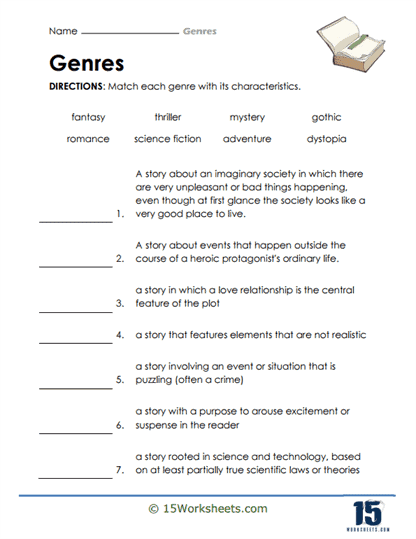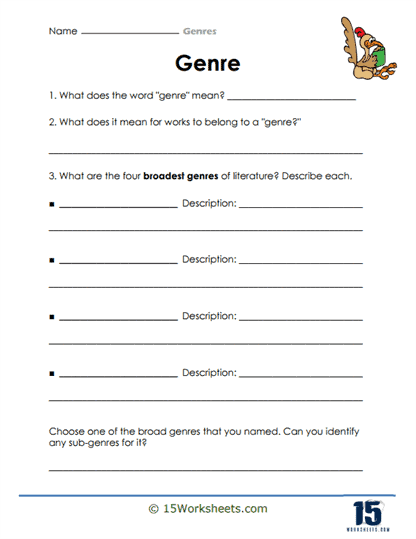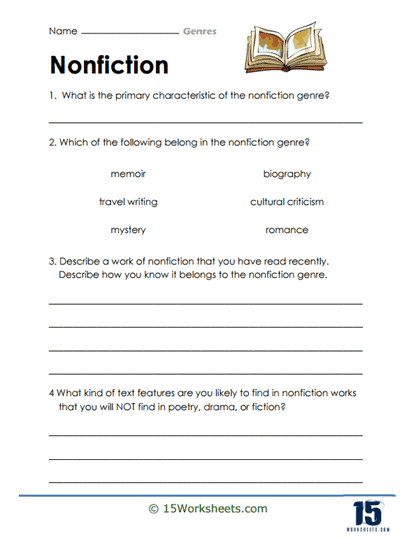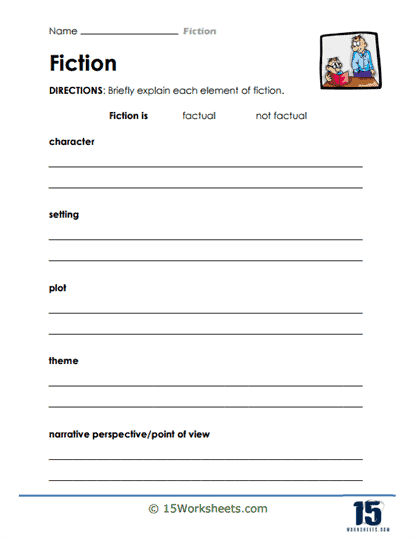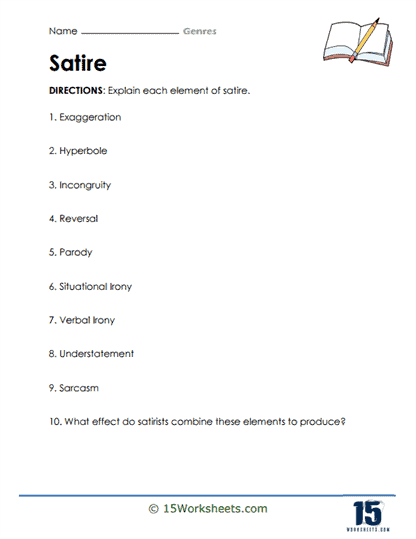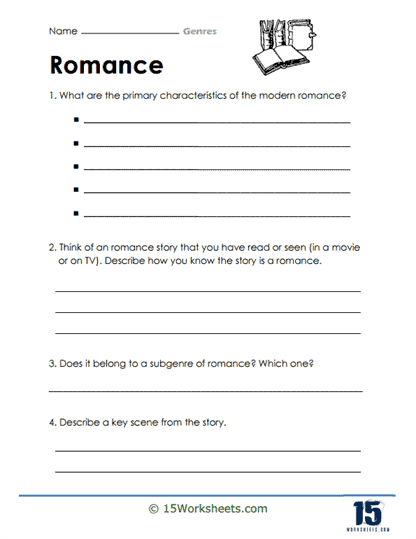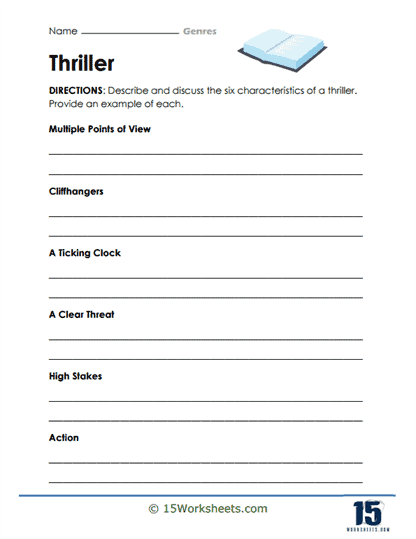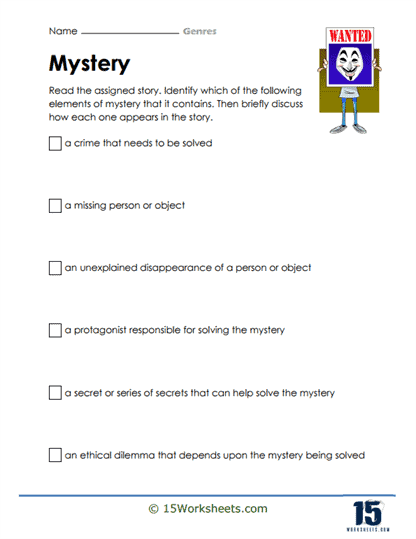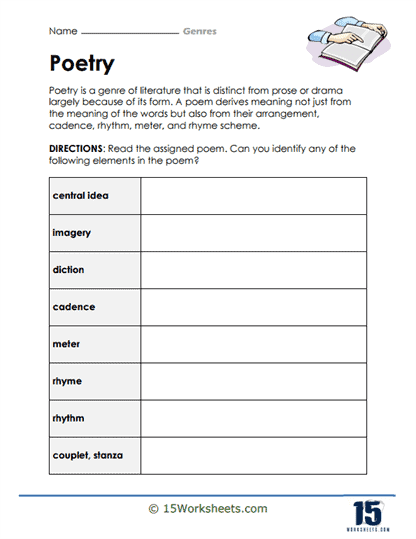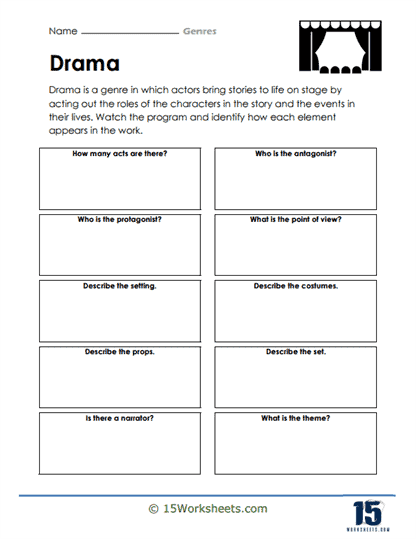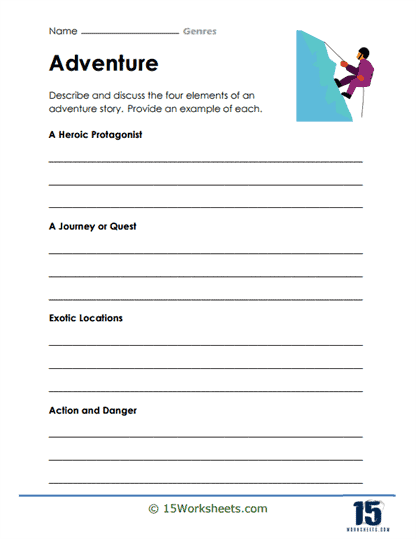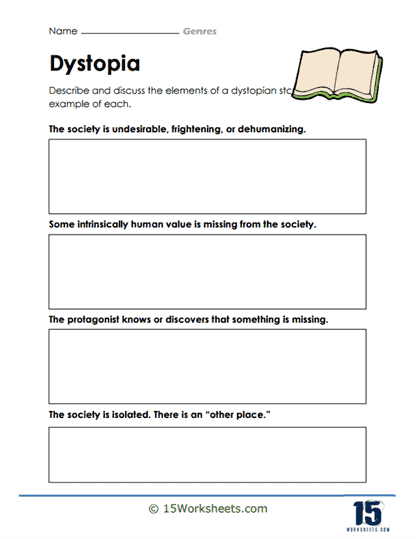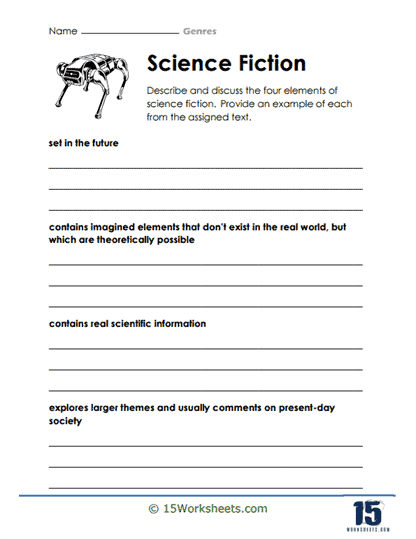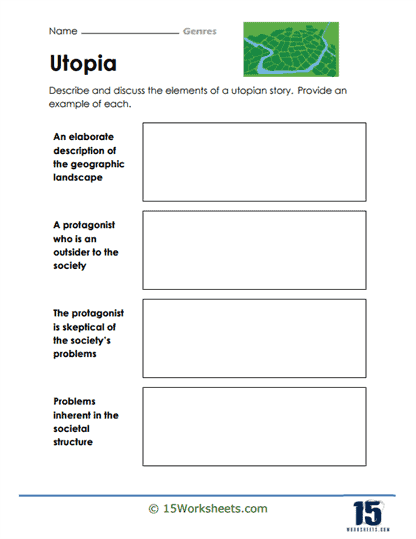Genres Worksheets
All About These 15 Worksheets
Imagine for a moment that you’ve just entered a library full of books, and your task is to sort them based on their content. How would you do it? A handy method to make this process easier is to categorize the books into different genres. You know, like mystery, fantasy, science fiction, biography, and so on. Now, if we take this concept of genres and apply it to a school activity, we get something known as a genres worksheet.
These genres worksheet are helpful to understand, identify, and differentiate between various types of genres in literature. It’s like having a map that guides you through the various landscapes of stories and books. With this map, you can navigate the world of literature more easily and enjoyably, whether you’re reading a gripping adventure, a spooky horror, or a tale from long, long ago in a history book.
Imagine this: You’re reading a story about a young girl who’s living in a magical world full of mythical creatures and powerful spells. By using a genres worksheet, you can identify this story as a “fantasy” genre because it’s filled with magical and imaginary elements. Or, if you’re reading a story about a clever detective who’s trying to solve a complex crime, your worksheet will help you understand that this is a “mystery” genre.
These worksheets come in several different formats. For instance, some provide a list of book titles, and your task is to match each title with the right genre. Others might ask you to describe the key characteristics of a genre. Yet others will have you read short story samples and then determine the genre of each one.
By understanding the genre, you can set your expectations about the story. For instance, if you’re reading a science fiction book, you know you might encounter futuristic technologies or alien life forms, which can make the reading process more thrilling. These worksheets can help you become a better writer. Understanding different genres allows you to experiment with your own writing. If you enjoy the suspense and excitement in a mystery, you might want to try writing your own mystery story. They can also help you to improve your comprehension skills. Each genre has its unique features, settings, and styles. Understanding these can help you grasp the story better, predict the plot, and relate to the characters.
What are Genres of Literature?
Genres of literature refer to various categories or classifications of written works based on their content, style, themes, and form. These categories help readers, writers, and scholars understand and navigate the vast world of literature. Some of the most common genres of literature include:
Fiction
Fictional works are stories that originate from the author’s imagination and are not based on real events or factual information. Some popular subgenres of fiction include:
a. Mystery – Stories that revolve around solving a crime or unraveling a secret.
b. Science Fiction – Stories that incorporate advanced technology, futuristic settings, or explore the consequences of scientific developments.
c. Fantasy – Stories that involve magical elements, mythical creatures, or supernatural events.
d. Romance – Stories that focus on relationships, love, and emotional connections between characters.
e. Horror – Stories that evoke fear, suspense, or dread, often involving supernatural or malevolent forces.
Nonfiction
Nonfiction works are based on facts, real events, and actual people. They aim to inform, educate, or persuade readers. Some common subgenres of nonfiction include:
a. Biography – An account of a person’s life, usually written by someone other than the subject.
b. Autobiography – A self-written account of the author’s life.
c. Memoir – A personal narrative that focuses on specific events or periods in the author’s life.
d. Essay – A short piece of writing on a particular subject, often presenting the author’s point of view.
e. History – Works that explore and document historical events, periods, or figures.
Poetry
A form of literature that uses rhythmic and aesthetic qualities of language to evoke emotions, convey ideas, or tell stories. Poetry often features devices such as rhyme, meter, and metaphor. Some types of poetry include:
a. Sonnet – A 14-line poem with a specific rhyme scheme and structure.
b. Haiku – A traditional Japanese form of poetry consisting of three lines and 17 syllables.
c. Limerick – A humorous, five-line poem with a distinct rhyme scheme (AABBA).
d. Epic – A long narrative poem that tells the story of a hero or legendary figure.
Drama
A genre of literature that is written to be performed on stage, often involving dialogue and interaction between characters. Drama can be divided into several subgenres, such as:
a. Tragedy – A play that deals with serious themes and often ends in the downfall or death of the protagonist.
b. Comedy – A play that uses humor, wit, or satire to entertain and amuse the audience.
c. Historical – A play that focuses on a specific historical event or period, often presenting a dramatized version of real events.
d. Melodrama – A play that relies on exaggerated emotions, heightened suspense, and stereotypical characters to evoke strong reactions from the audience.
These genres and subgenres represent just a fraction of the diverse world of literature. Works may span multiple genres or defy easy classification, as authors continue to explore new themes, styles, and forms of expression.

